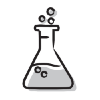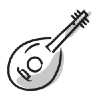5. Mindset Tribes (Short)

Mindset Tribes (Short)
As Nathan got to know his mentors, he enjoyed meeting their friends. It piqued his curiosity to discover how different these friends were and how their friends suited them. Nathan discovered:
Fisherman (Pre-modern)

Fisherman’s life was intertwined with the lives of family and lifelong friends: local villagers, fellow fishers, forest folk, mountain people, riverside residents, and some far-off desert dwellers. All of them marveled at the riddles and beauty of creation. Some were extremely smart and successful but retained a simplicity of heart and generosity of spirit. All were deeply embedded in their communities.
Scientist (Modernist)

Scientist had a carefully vetted network of private and professional contacts. Her inner circle included accountants, auditors, actuaries, engineers, and CEOs. Busy people. Successful people. Smart people. Analytical scrutinizers. Like her, they were critical thinkers. In the center of her inner circle was her son, her first and onlyborn.
Artist (Postmodern)

The friends of the Artist couple were free-thinking, freely socializing, and strikingly diverse: poets, painters, potters, and more. There were actors and activists, Greens and Goths, vegans, influencers, and young urban creatives. Some were captivated by their tarot cards, crystals, and dream catchers. They were relational and relativistic, spiritual, creative, and frequently quite alternative.
Wildlife Researcher

Wildlife Researcher had friends who were quite similar to Fisherman, but also academics, artists, and business people. His friends included most members of his extended family, no matter how different they were to him. Friends with minds similar to his own often held radically different opinions. They supported a variety of charitable and political causes. The attitude to religion of some was miles from his own. In their discussions, they were mostly in agreement about technical details, but enjoyed a verbal tug-of-war about implications, interpretations, and approaches. They were inquirers, searchers, and explorers with more questions than answers. They tried to understand the other side of every argument. Wildlife Researcher’s friends yearned for growing clarity in knowing right from wrong. They were seekers of truth and pursuers of goodness.
Nathan noticed an earthy, unglazed ceramic sign displayed near the researcher’s fireplace—a keepsake from his years in Africa. The words, penned by an author from that mesmerizing continent, captured the researcher’s life motto.
There is no nobler pleasure than intellectual exchange
with people whose ideas vastly differ from your own—
people deeply acquainted with different parts
of the infinite kingdom of truth.
~ N.P. van Wyk Louw
Intrigued by the sign by the fireplace, Nathan began describing the vast differences he noticed between his mentors. Wildlife Researcher listened attentively. “I find it incredibly helpful to discern between three distinct and radically different ways of thinking.” He paused. “They are like three separate sets of software for the mind.” Looking at his first extended finger, he continued, “The people among whom I lived in Africa were deeply connected to nature. They were also deeply connected to their community and to a world of mystery. These tribes’ entire way of thinking directly flows from these connections.” He pointed to the second finger. “In our culture, a modernist, fact-and-figure-driven way of thinking attempts to turn every aspect of life into a science.” As he tapped on his cell phone, he continued, “It brought us technological progress, but strangely, also isolated us in many ways.” Focusing on his third extended finger, Wildlife Researcher continued, “The postmodern mindset shifts people’s focus to the inside”—he tapped his chest—“to focus on experience and authentic self-expression of individuals from a wide variety of backgrounds.”
• Nature, community, & mystery centered (pre-modern)
• Fact, figure, & formula centered (modern)
• Feelings & self-expression centered (post-modern)
• Prioritizes virtue (pre-modern)
• Prioritizes progress (modern)
• Prioritizes inclusion, diversity, & equality (postmodern)
For the longer, fuller version of chapter 5, click here.
To skip to chapter 6, click here.